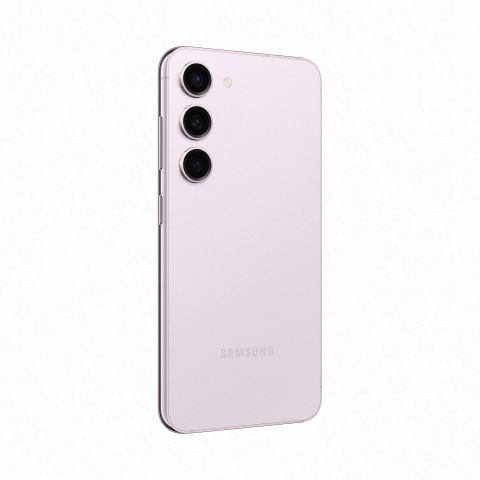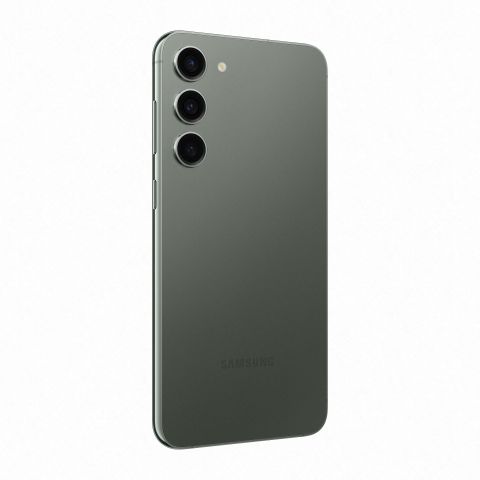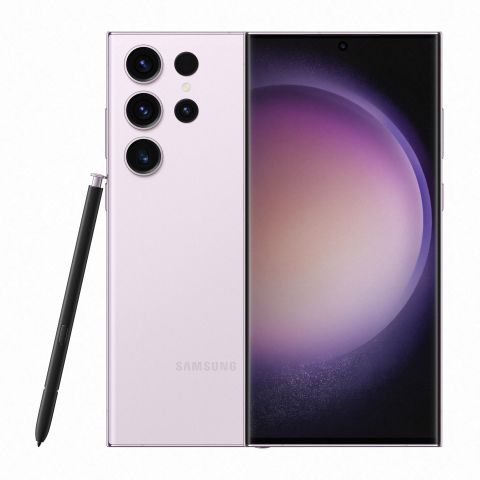
February is here, and like clockwork, there’s a giant new Samsung phone available for fans of big screens and even bigger cameras. We’re talking, of course, about the Galaxy S23 Ultra — the company’s latest plus-sized flagship designed to deliver the best of the best for folks willing to shell out more than $1,000 for their next phone.
The S23 Ultra seems like a conservative upgrade on the surface, cramming a faster processor and some quality-of-life updates into a familiar design. But with a truly ridiculous camera setup (at least on paper) and some intriguing software tricks, the Galaxy S23 Ultra could end up being the new high-end phone to beat for serious photographers and multitaskers.
Wondering if you should drop your money on a preorder? Here’s what we think about the Galaxy S23 Ultra after getting our hands on one for a few hours.
Galaxy S23 Ultra price and preorders
Samsung’s latest plus-sized phone is available in Phantom Black, Cream, Green or Lavender, with storage options that include 256GB, 512GB and 1TB. If you buy via Samsung with our exclusive link, you’ll score a total of $150 in Samsung eCard credit.
The Galaxy S23 Ultra is available for preorder now starting at $1,200 with 256GB of storage and in your choice of Phantom Black, Cream, Green or Lavender, with units set to ship on Feb. 17. From now through Feb. 16, buying through Samsung will get you a bump to the next storage tier (so 256GB to 512GB, or 512GB to 1TB) for free as well as $100 in Samsung credit — or up to $150 if you use our exclusive link.
Shoppers going through Best Buy can save up to $780 on the Galaxy S23 series, and can get up to a $100 Best Buy gift card.
If you buy through Verizon, you can get up to $800 off the S23 Ultra with an eligible trade-in on a 5G Unlimited plan — on top of a free Galaxy Watch 5 and Galaxy Tab S7 FE. Preordering via Verizon also gets you a free storage upgrade, and those switching from another carrier get a free $200 Verizon eCard.
AT&T is offering a similar promotion, promising up to $1,000 off the S23 Ultra with an eligible trade-in and a free storage upgrade for preordering. You’ll also be able to get AT&T’s cloud storage plan alongside your new phone for $20 per month.
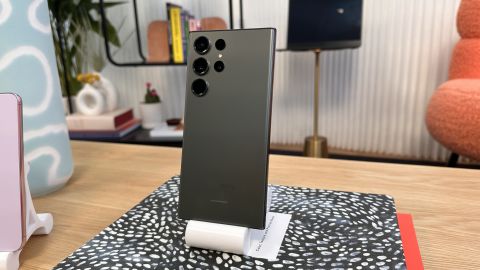
We wouldn’t blame you for mistaking the Galaxy S23 Ultra for last year’s model at a quick glance. This is largely the same slick, supersized phone that Samsung launched in 2022, ditching the bulky camera bump from the S21 Ultra in favor of a seamless rear panel that houses the handset’s array of four giant camera lenses (more on those later).
Just like its predecessor, the S23 Ultra feels great to hold, with flat edges that give it some extra grip over the curvier S23 and S23+. The Ultra’s four color options — Phantom Black, Green, Cream and Lavender — all looked fantastic up close, though I was extra partial to the latter two. Cream and Lavender are replacing the Phantom White and Burgundy options from the S22 Ultra, and as a fan of off-whites and anything purple adjacent, I’m happy about the change.
Scrolling through webpages on the phone’s 6.8-inch, 120Hz AMOLED display felt wonderfully fluid, and I was able to speed my way through Asphalt 9 Legends without a hitch, thanks to the new Qualcomm Snapdragon 8 Gen 2 processor packed inside. The S23 thankfully retains its predecessor’s built-in S Pen, which felt smooth and responsive once I popped it out to take some quick notes and mark up my selfies in the AR Doodles app. But as with any Galaxy Ultra, the real appeal of this year’s model is the camera.
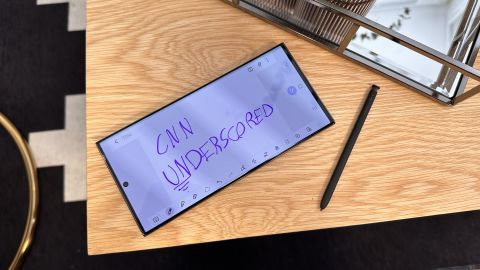
The Galaxy S23 Ultra’s quad-camera array is led by a whopping 200-megapixel wide camera — certainly the highest pixel count of any phone camera we’ve tested, and one that nearly doubles the main 108-megapixel lens featured on the Galaxy S22 Ultra. This should result in shots that are significantly sharper and more colorful than the already impressive photos we got from last year’s model, complete with newly added support for wider 8K video. The S23 Ultra’s massive main camera will once again be joined by a 12-megapixel ultrawide lens (for those panoramic shots) and a pair of 10-megapixel telephoto lenses that are designed to deliver an even better 100X Space Zoom for when you’re out trying to capture the moon and stars.
We’ll have to put these cameras to the test in the real world to see just how much better they are, but the handful of shots I was able to capture in Samsung’s demo space — including the selfies I grabbed on the 12-megapixel front cam — looked excellent. Zooming in and out felt instantaneous, as did playing around with the usual smattering of camera settings and filters that come standard on a Samsung phone.
All three Galaxy S23 models will launch with some promising software upgrades, including Modes — a set of customizable profiles designed to help you avoid distractions while working, sleeping or hitting the gym. You can lock various settings and even wallpapers to specific Modes, which reminds us a lot of how Focus modes work on iOS 16. There’s also a new Bixby Text Call feature that lets you quickly respond to incoming calls with an automatically generated text. These perks are part of Samsung’s latest One U1 5.1 software, which should roll out to older Galaxy devices in the coming months.
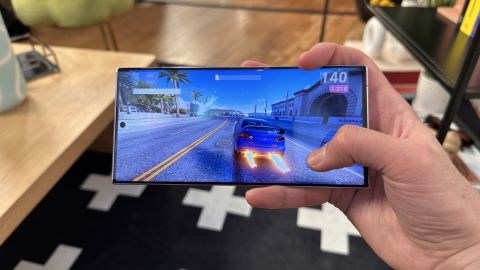
New cameras aside, the Galaxy S23 Ultra promises better battery life — we got an impressive 14-plus hours on last year’s model, so we’re eager to see if that claim holds up. You can expect a stronger Gorilla Glass Victus 2 display that’s designed to be more crack-resistant as well as advanced vision booster technology that’s built to offer better color and contrast throughout the day. Again, these are all upgrades we’ll have to test in everyday use, but they should add some extra value to what’s already looking like a feature-packed phone.
| Display |
6.1-inch Dynamic AMOLED 2X Full HD display at 120Hz |
6.6-inch Dynamic AMOLED 2X Full HD display at 120Hz |
6.8-inch Dynamic AMOLED 2X Quad HD display at 120Hz |
|---|---|---|---|
| Memory |
8GB |
8GB |
8GB / 12GB |
| Storage |
128GB / 256GB |
256GB / 512GB |
256GB / 512GB / 1TB |
| Processor |
Snapdragon 8 Gen 2 |
Snapdragon 8 Gen 2 |
Snapdragon 8 Gen 2 |
| Rear cameras |
50-megapixel wide camera, 12-megapixel ultrawide camera, 10-megapixel telephoto camera with 30X Space Zoom |
50-megapixel wide camera, 12-megapixel ultrawide camera, 10-megapixel telephoto camera with 30X Space Zoom |
200-megapixel wide camera, 12-megapixel ultrawide camera, dual 10-megapixel telephoto cameras with 100X Space Zoom |
| Front camera |
12-megapixel wide camera |
12-megapixel wide camera |
12-megapixel wide camera |
| Battery |
3,900 mAh with Super Fast Charging |
4,700 mAh with Super Fast Charging 2.0 |
5,000 mAh with Super Fast Charging 2.0 |
| Size and weight |
5.76 x 2.79 x 0.3 inches, 5.93 ounces |
6.21 x 3 x 0.3 inches, 6.91 ounces |
6.43 x 3.07 x 0.35 inches, 8.25 ounces |
| Price |
From $800 |
From $1,000 |
From $1,200 |
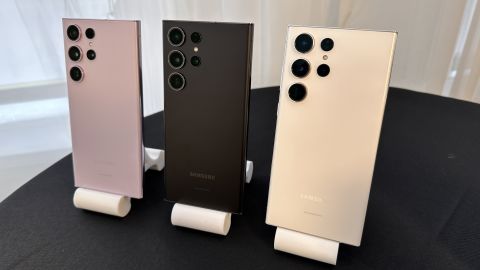
The Galaxy S23 Ultra looks like more of the same, and depending on where you are in your upgrade cycle, that isn’t necessarily a bad thing. Folks coming from a Galaxy S20 Ultra or older should enjoy an especially big jump, as you’ll be getting a significantly streamlined design, a built-in S Pen, 5G support and a camera that packs nearly twice the resolution for extra-sharp shots. Galaxy S21 Ultra owners will mainly benefit from the improved design and included pen, while Galaxy S22 Ultra users have very little reason to make the leap — unless you absolutely have to have the latest processor and cameras.
We also got our hands on the more attainable $800 Galaxy S23 and $1,000 Galaxy S23+, which don’t have quite as advanced cameras and displays but still look and feel great — and sport many of the same key features as well as the same fast processors. Those will likely continue to be the best Android phones for the majority of people, but for power users willing to splurge on a big, pen-friendly display and truly loaded cameras, the S23 Ultra is looking like yet another best phone contender. We’ll be putting the entire S23 line through its paces to see how it stacks up to last year’s models — and the latest competition from Apple and Google — so stay tuned for more.


